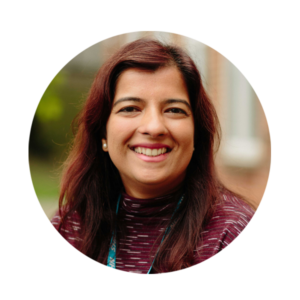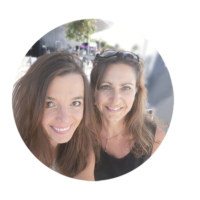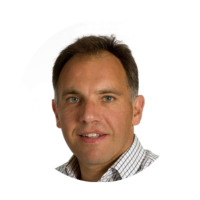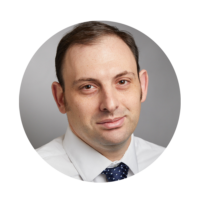‘OCD is not me’
Video on OCD describing the impact of OCD on young people and their families and what treatment involves.
NICE guidelines
NICE guidelines on Obsessive-compulsive disorder and body dysmorphic disorder: treatment.
OCD Action
0845 390 6232
OCD Youth
Sources
American Psychiatric Association (2013). Diagnostic and statistical manual of mental disorders (5th ed.). Arlington, VA: American Psychiatric Publishing.
American Psychiatric Association. (2007). Practice guideline for the treatment of patients with obsessive-compulsive disorder. Arlington, VA: American Psychiatric Association.
Arnold, P. D., & Richter, M. A. (2001). Is obsessive-compulsive disorder an autoimmune disease? Canadian Medication Association Journal, 165(10), 1353–1358.
Chansky, T. E. (2000). Freeing your child from obsessive-compulsive disorder. New York, NY: Random House.
Chowdhury, U., Frampton, I., & Heyman, I. (2004) Clinical characteristics of young people referred to an obsessive compulsive disorder clinic in the United Kingdom. Clinical Child Psychology and Psychiatry, 9(3), 395-401.
Chung, E., & Heyman, I. (2008). Challenges in child and adolescent obsessive-compulsive disorder. Psychiatry, 7(8), 319 – 324.
Fernandez de la Cruz, L., Barrow, F., Bolhuis, K., Krebs, G., Volz, C., Nakatani., Heyman, I., & Mataix-Cols, D. (2013). Sexual obsessions in paediatric obsessive-compulsive disorder: clinical characteristics and treatment outcomes. Depression and Anxiety, 30(8), 732-740.
Franklin, M., Foa, E., & March, J. S. (2003). The paediatric obsessive-compulsive disorder treatment study: rationale, design, and methods. Journal of Child and Adolescent Psychopharmacology, 13(1), 39-51.
Fontenelle, L. F., Mendlowicz, M. V., & Versiani, M. (2006). The descriptive epidemiology of obsessive-compulsive disorder. Progress in Neuro-psychopharmacology & Biological, 30(3), 327–37.
Heyman, I., Fombonne, E., Simmons, H., Ford, T., Meltzer, H., & Goodman, R. (2003) Prevalence of obsessive-compulsive disorder in the British nationwide survey of child mental health. International Review of Psychiatry, 15(1-2), 178–184.
Højgaard, D. R. M. A., Hybel, K. A., Mortensen, E. L., Ivarsson, T., Nissen, J. B., Weidle, B., Melin, K., Torp, N. C., Dahl, K., Valderhaug, R., Skarphedinsson, G., Storch, E. A., & Thomsen, P. H. (2018). Obsessive-compulsive symptom dimensions: Association with comorbidity profiles and cognitive-behavioral therapy outcome in pediatric obsessive-compulsive disorder. Psychiatry Research, 270, 317–323.
Lenhard, F., Andersson, E., Mataix-Cols, D., Ruck, C., Vigerland, S., Hogstrom, J., Hillborg, M., Brander, G., Ljungstrom, M., Ljotsson, B., & Serlachius, E. (2017). Therapist-guided, internet-delivered cognitive-behavioural therapy for adolescents with obsessive-compulsive disorder: a randomised controlled trial. Journal of the American Academy of Child and Adolescent Psychiatry, 56(1), 10–19.
Lenhard, F., Vigerland, S., Andersson, E., Ruck, C., Mataix-Cols, D., Thulin, U., Ljotsson, B., & Serlachius, E. (2014). Internet-delivered cognitive behavior therapy for adolescents with obsessive-compulsive disorder: an open trial. PLoS One, 9(6), e100773.
March, J. S., & Mulle, K. (1998). OCD in Children and Adolescents: A Cognitive-behavioural Treatment Manual. New York, NY: The Guildford Press.
Mataix-Cols, D., Nakatani, E., Micali, N., & Heyman, I. (2008). Structure of obsessive-compulsive symptoms in paediatric OCD. Journal of the American Academy of Child and Adolescent Psychiatry, 47(7), 773 – 778.
Mataix-Cols, D., Turner, C., Monzani, B., Isomura, K., Murphy, C., Krebs, G., & Heyman, I. (2014). Cognitive-behavioural therapy with post-session D-cycloserine augmentation for paediatric obsessive-compulsive disorder: pilot randomised controlled trial. The British Journal of Psychiatry, 204(1), 77- 78.
Merlo, L. J., Lehmkuhl, H. D., Geffken, G. R., & Storch, E. A. (2009). Decreased family accommodation associated with improved therapy outcome in paediatric obsessive-compulsive disorder. Journal of Consulting and Clinical Psychology, 77(2), 355 – 360.
National Institute for Health and Care Excellence. (2015, November 29). Obsessive-compulsive disorder and body dysmorphic disorder: treatment (NICE Guideline CG31). Retrieved from https://www.nice.org.uk/guidance/cg31
Peris, T.S., Bergman, R. L., Langley, A., Chang, S., McCracken, J. T., & Piacentini, J. (2008). Correlates of accommodation of paediatric obsessive-compulsive disorder: parent, child, and family characteristics. Journal of the American Academy of Child and Adolescent Psychiatry, 47(10), 1173-1181.
Pertusa, A., Fullana, M., Singh, S., Alonso Jose, P., Menchon, A., & Mataix-Cols, D. (2008). Compulsive hoarding: OCD symptom, distinct clinical syndrome, or both? American Journal of Psychiatry, 165(10), 1289 – 1298.
Piacentini, J., Bergman, R. L., Keller, M., & McCracken, J. (2003). Functional impairment in children and adolescents with obsessive-compulsive disorder. Journal of Child and Adolescent Psychopharmacology, 13(1), 61–69.
Pediatric OCD Study Team (2004). Cognitive-behaviour therapy, sertraline, and their combination for children and adolescents with obsessive-compulsive disorder: The pediatric OCD Treatment Study randomized controlled trial. Journal of the American Medical Association, 292(16), 1969-1976.
Salkovskis, P. M., & Westbrook, D. (1989). Behaviour therapy and obsessional ruminations: Can failure be turned into success? Behaviour Research and Therapy, 27(2), 149-160.
Scahill, L., Riddle, M. A., McSwiggin-Hardin, M., Ort, S. I., King, R. A., Goodman, W. K., Cicchetti, D., & Leckman, J. F. (1997). Children’s Yale-Brown Obsessive Compulsive Scale: Reliability and validity. Journal of the American Academy of Child and Adolescent Psychiatry, 36(6), 844–852.
Skarphedinsson, G., Weidle, B., Thomsen, P. H., Dahl, K., Torp, N. C., Nissen, J. B., Melin, K. H., Hybel, K., Valderhaug, R., Wentzel-Larsen, T., Compton, S. N., & Ivarsson, T. (2014)
European Child & Adolescent Psychiatry, 24(5), 591-602
Stengler, K., Olbrich, S., Heider, D., Dietrich, S., Riedel-Heller, S., & Jahn, I. (2013). Mental health treatment seeking among patients with OCD: impact of age of onset. Social Psychiatry and Psychiatric Epidemiology, 48(5), 813–19
Storch, E. A., Murply, T. K., Geffken, G. R., Mann, G., Adkins, J., Merlo, L. J., Duke, D., Munson, M., Swaine, Z., & Goodman W. K. (2006). Cognitive-behavioural therapy for PANDAS-related obsessive-compulsive disorder: findings from a preliminary waitlist controlled open trial. Journal of the American Academy of Child and Adolescent Psychiatry, 45(10), 1171 – 1178.
Storch, E. A., Merlo, L. J., Larson, M. J., Geffken, G. R., Lehmkuhl, H. D., Jacob, M. L., Murphy, T. K., & Goodman., W. K. (2008). Impact of comorbidity on cognitive-behavioural therapy response in pediatric obsessive-compulsive disorder. Journal of the American Academy of Child and Adolescent Psychiatry, 47(5), 583 – 592.
Swedo, S. E. (1998). Pediatric autoimmune neuropsychiatric disorders associated with streptococcal infections: clinical description of the first 50 cases. American Journal of Psychiatry, 155(4), 264 – 271.
Torp, N. C., Dahl, K., Skarphedinsson, G., Thomsen, P. H., Valderhaug, R., Weidle, B., Melin, K. H., Hybel, K., Nissen, J. B., Lenhard, F., Wentzel-Larsen, T., Franklin, M. E., & Ivarsson, T. (2015). Effectiveness of cognitive behavior treatment for pediatric obsessive-compulsive disorder: acute outcomes from the Nordic Long-term OCD Treatment Study (NordLOTS). Behaviour Research and Therapy, 64, 15–23.
Turner, C. M., Mataix-Cols, M., Lovell, K., Krebs, G., Lang, K., Byford, S., & Heyman. (2014). Telephone Cognitive-Behavioural Therapy for adolescents with obsessive-compulsive disorder: a randomized controlled non-inferiority trial. Journal of American Academy of Child and Adolescent Psychiatry, 53(12), 1298 – 1307.
Veale, D., Freeston, M., Krebs, G., Heyman, I., & Salkovskis, P. (2009). Risk assessment and management in obsessive-compulsive disorder. Advances in Psychiatric Treatment, 15(5), 332 – 343.
Volz, C., & Heyman, I. (2007). Case series: transformation obsession in young people with obsessive-compulsive disorder (OCD). Journal of the American Academy of Child and Adolescent Psychiatry, 46(6), 766 – 772.
World Health Organization. (2018). The ICD-11 classification of mental and behavioural disorders: Clinical descriptions and diagnostic guidelines. Geneva: World Health Organization.








